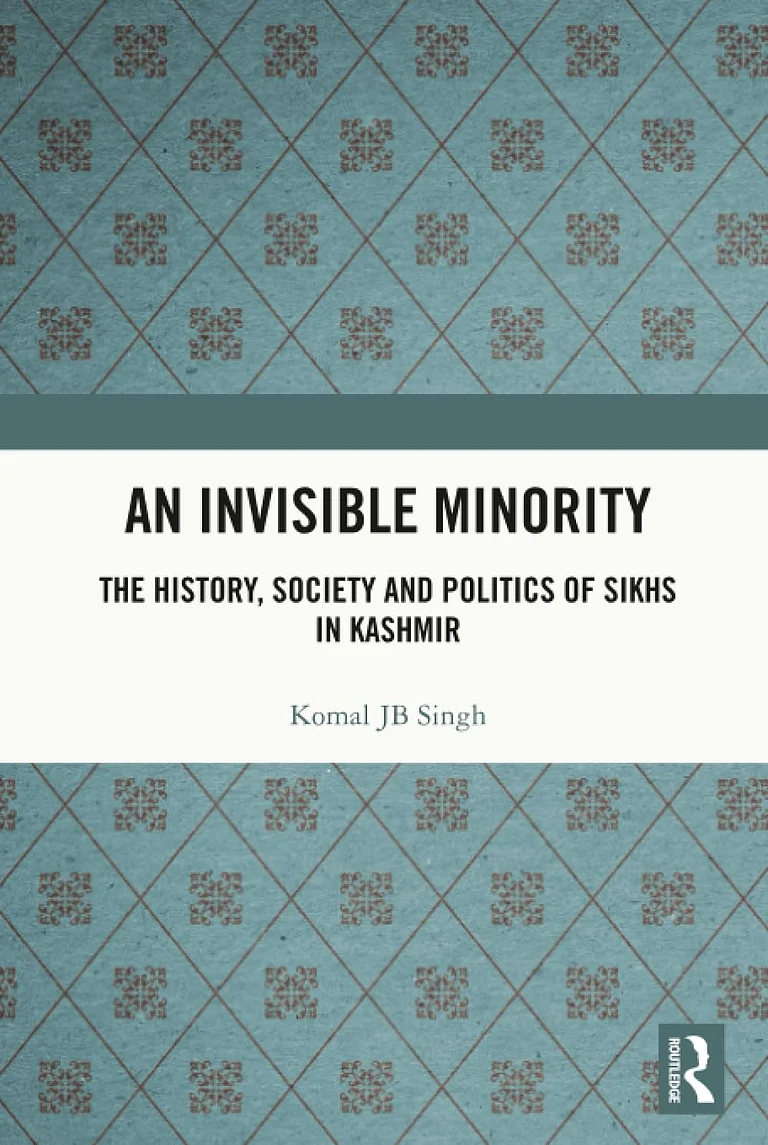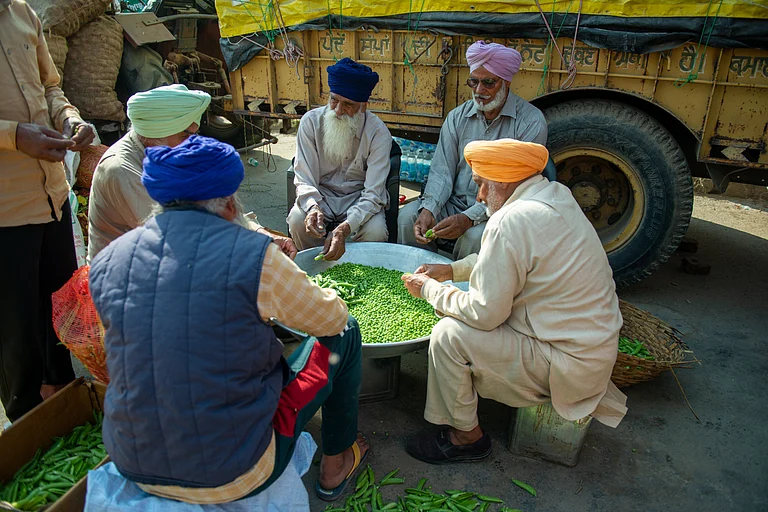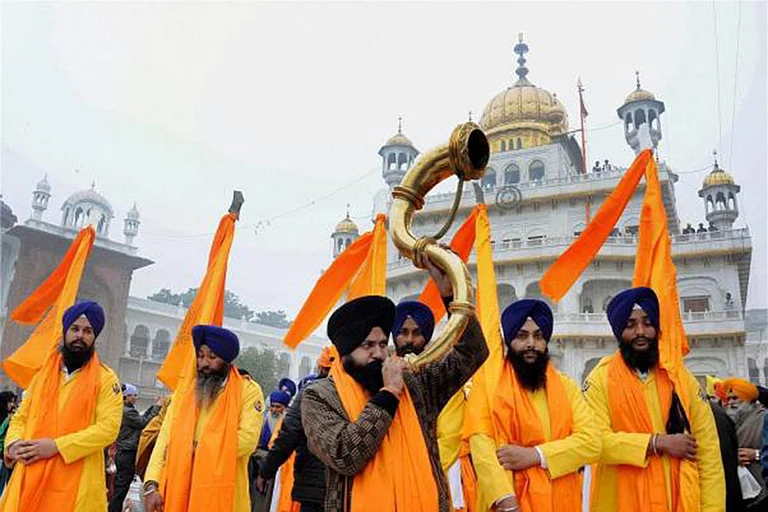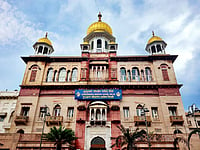Hindu Turk Ko Rafji Imam Safi, Manas Ki Jaat Sabhe Ek Eh Penchan Bo (Recognise the whole human race as one)
-- Guru Gobind Singh
Guru Nanak Sahib ji laid the foundation of a Universal Panth based on the principles of equality and oneness. He institutionalised those teachings into Khalsa. On Vaisakhi Day in 1699, the Khalsa was revealed to the world to foster a sense of unity and brotherhood among people, transcending social barriers.
After the sacrifice made by Ninth Sikh Guru, Guru Tegh Bahadhur Sahib ji, in Delhi’s Chandni Chowk for the religious rights of Kashmiri Pandits, Guru Gobind Singh Sahib ji foresaw the need for people to be able to defend themselves and their faith against external threats. Thus, the Khalsa was created to embody the virtues of courage, equality, righteousness, and selfless service.
The turbaned Sikhs of Jammu and Kashmir not only reside in the region but also embody its living history. Guru Nanak Sahib and the Sixth Sikh Master, Guru Hargobind Sahib ji, journeyed to Kashmir, spreading the message of oneness and universalism.
Bhai Vir Singh, the sole poet to write about the Martand temple and capture the beauty of Kashmir through the eyes of its creators, further enriched the historical narrative. Thus, the Sikhs of Jammu and Kashmir, with their ethos of unity and altruism, have become emblematic of the region's syncretic and pluralistic culture.
Every year on April 13, Sikhs celebrate Vaisakhi with immense zeal and fervour. Muslims and Hindus can be seen joining in, showering petals on the procession of Nagar Kirtan. On the eve of Vaisakhi, a grand gathering takes place at the historic Gurudwara of Nangali Sahib in the border district of Poonch, attracting people from all walks of life and faiths.
This essence of unity and the teachings of the Sikh Gurus were exemplified when a Sikh individual in Jammu and Kashmir provided shelter from the rain to a Muslim praying on National Highway 1A. This act exemplifies the longstanding tradition of communal harmony and saintliness that characterises Jammu and Kashmir. As Sikhs, we don’t see seven billion people in the world but one creator in seven billion shades.
As Guru Nanak Sahib said: “One light gave birth to all of us, then how can one be good and the other bad”.
Historical and Spiritual Significance of Vaisakhi
The message of Guru Sahib and the journey of Vaisakhi are still prevalent. For humanity, Vaisakhi is a day to celebrate oneness, equality and sovereignty. It’s a day to recognise the divine light present in all of us. It’s a day to stand up for justice and empower the weak and downtrodden.
The period from the 15th to the 18th century was a tumultuous time in the Indian subcontinent, marked by invasions from Afghan and Mughal chieftains. It was an era characterised by oppression and persecution, compounded by societal issues such as casteism, religious dogma, and superstition.
Women were marginalised, denied equality, and subjected to various forms of discrimination. In the midst of these challenges, the Sikh Gurus emerged as beacons of hope, unifying people and inspiring change. Guru Nanak Sahib, the founder of Sikhism, embarked on extensive travels, covering 28,000 kilometres across nine nations. His message of oneness and universalism transcended religious boundaries, emphasising the importance of one’s actions over outward appearances.
The journey from Guru Nanak Sahib to Guru Gobind Singh Sahib was fraught with challenges. Guru Gobind Singh Sahib, the tenth Sikh Guru, faced numerous trials in his quest to establish an egalitarian and just society. He even sacrificed his family in pursuit of this noble cause.
Vaisakhi holds particular significance in Sikhism, symbolising the transition from Shabad (experiential wisdom) to Khalsa (saint-warrior). Guru Gobind Singh Sahib’s creation of the Khalsa was an act of defiance against oppressive rulers, empowering the downtrodden and instilling courage in the masses. The Khalsa was envisioned as a community free from ego, filled with love and compassion, dedicated to serving humanity and pursuing spiritual wisdom. The concept of the Khalsa was revolutionary, challenging social norms and transcending barriers of caste and creed. Guru Gobind Singh Sahib envisioned the Khalsa as “The Pure Ones,” committed to upholding truth, justice, and freedom. The Khalsa was not merely a military force but a spiritual community dedicated to righteousness and social justice. Bhagat Kabir ji reflects the essence of the Khalsa as a community dedicated to the service of humanity, the pursuit of spiritual wisdom, and the eradication of ego.
“Kabir, he alone is a Khalsa, whose eyes are compassionate, who resides in the home of all hearts” Guru Granth Sahib, Ang 110.
Guru Gobind Singh, the tenth Sikh Guru, on April 13, 1699, chose Vaisakhi, the harvest festival in Panjab, as the occasion to reveal the Khalsa, a community of initiated Sikhs committed to the highest ideals of Sikhism.
In Punjab, Vaisakhi has been long celebrated as the cultural festival of the harvest of Rabi. Harvest symbolises fruits of labour and the abundance of nature just like the development of Khalsa after great sacrifices and nurturing by the ten Sikh Gurus. Just like a farmer works hard, toils and waters his/her fields, similarly the ten Sikh Gurus shaped the psyche of the people, uplifted their spiritual state, broke the shackles of slavery and turned ordinary beings into Saint-Warrior. That’s why, even today, every Sikh tries to fulfill his temporal and spiritual duties by serving humanity and standing up for righteousness and justice.
A culture which was essentially folk was transformed into a culture of divine awareness.
When the day had arrived, there was a huge congregation at Takht Sri Kesgarh Sahib, Panjab. Guru Gobind Sahib ji, the son of the martyred ninth master, Guru Tegh Bahadur Sahib ji had come to the realisation that his Sikhs must adapt or perish in these perilous times. He sent forth messages across India and asked Sikhs to congregate at Anandpur at the annual Vaisakhi festival. They came from far and wide, each starkly different in costume and custom from their fellow brethren, but all united by the teachings of Guru Nanak.
All those who had faith in the Shabad had assembled before the Guru. Guru had made it clear that this year Vaisakhi is going to be a unique affair. Guru Sahib addressed the congregation with a stirring oration of his divine mission. After the discourse, Guru Sahib flashed his unsheathed sword and said that every great work demands an equally great sacrifice. Then, pointing at the crowd, Guru Sahib demanded one head for oblation. It was time for allegiance. It was time to submit yourself to the Guru even if that meant giving up your head. Leadership requires seeds of inspiration. While addressing the gathering, Guru Sahib had so much compassion, courage, love and humility that it empowered the Sikhs. It entered people’s consciousness that when something as powerful as the words of Guru Granth Sahib enters your consciousness, then it changes your worldview.
During that time in the subcontinent, people were oppressed and persecuted. No one was allowed to practice his or her faith. The Emperors were tyrant. There were forceful conversions. The downtrodden and poor were oppressed by the Kings. There was caste system and women were treated badly. On the day of Vaisakhi in 1699 at Anandpur, the Sikh faith underwent its greatest transformation.
As mentioned in Sikh historical text Sri Gur Pratap Suraj Granth by Bhai Santokh Singh, Daya Ram, a shopkeeper of Lahore, arose and offered himself to the Guru. Vaisakhi becomes amazing and revolutionary when you are ready to be the lovers of the Gurus Wisdom. He followed behind the Guru to a nearby tent. Guru Gobind Singh emerged alone from the tent with his sword dripping in blood and asked for another head. This time Dharam Singh from Hastinapur (today Meerut), presented himself to the Guru following the footsteps of Daya Ram. Guru Gobind Singh repeated the call three times. Three more courageous Sikhs individually answered the Guru's call Mohkham Chand, a tailor, Himmat Rai, a water-bearer from town Sahib Chand, a barber from Bidar in Karnataka, each stood up one after another and advanced to offer their heads. Look at the beauty of Vaisakhi of 1699 that the blessed fort of uncut hair, Takht Sri Kesgarh Sahib had people who have cut hair in their life. like the volunteer Bhai Sahib Chand, who by profession was a Barber but he was also invited because he had faith in the Shabad. No discrimination was made on what class, caste or profession you belong to. It’s their choice whether they want to volunteer or not. After few moments Guru Sahib emerged from the tent with the five Sikhs and declared them as “Panj Pyare”. Thus, Saint-Warriors were born out of Gurus Love. They were without any hatred. These five were initiated into the Khalsa siblinghood by receiving Amrit.
Thus, Saint-Warriors were born out of Gurus love. They were without any hatred. These five were initiated into the Khalsa sibling-hood by receiving Amrit.
Guru Gobind Singh Sahib blessed the downtrodden, the weak with a new life free from taboos, previous life identities. All castes became one, women were treated equal as men, poor and downtrodden were blessed with sovereignty and royalty. Guru Sahib created warriors, scholars just like himself. The world had never witnessed an institution of this sort. Men were given the surname “Singh” and women were blessed with the surname “Kaurs”. It was something very unique in the world history. With the revelation of Khalsa, Guru Sahib gave women the opportunity to live free of the chains of a dogmatic society. Sikh history has many instances where women can be seen leading men in battles. Mai Bhago, the valiant Sikh warrior was the inspiration behind the bravery of the 40 liberated Sikhs who had deserted Guru Gobind Singh ji in the battle of Anandpur Sahib. She led them to the battle of Mukhtsar.
Over the next 150 years, from 1710 to 1860, Gurus Khalsa went onto rise against oppression by tyrant rulers and invasion by Afghan Chieftains. Maharaja Ranjit Singh conquered Afghanistan and took the battle to their territory and established a Kingdom based on the Gurus philosophy of equality, oneness and universalism. The Great Sikh General Banda Singh Bahadur conquered Panjab and abolished the Zamindari System. For the first time in the world, the homeless were given lands and the right to live a dignified life. The Sikhs, till date, live their life based on the teachings of Guru Granth Sahib. But sadly, most of us have forgotten who we are. We have deviated from the path shown by Guru Sahibs. We have started practising casteism and discrimination on the basis of religion, class and colour. There is growing religious intolerance in the country. We don’t identify ourselves by our Gurus teachings. Our identity is meaningless if we don’t see each one of us as equals.
The duty of the Khalsa is to fight for Human freedom and food for everybody around the world regardless of their caste, creed, faith, colour etc. The Khalsa is meant to be like a lighthouse. They are meant to guide and help. Our turban, our attire, represents oneness and standing out in the face of darkness.
Amid COVID-19, the world was a witness to their Spirit of selfless service. When the world needed food, Sikhs around the globe started langar sewa across various countries and continents and when the world needed Oxygen, they transformed guru Nanaks Kitchen into makeshift covid wards and started Oxygen Langar.
Just like a Moth sacrifices itself or a bumblebee is intoxicated in the love of the flower, the Khalsa is meant to drenched in Gurus words, become selfless and serve the world.
As we celebrate Vaisakhi, let us remember the spirit of the Khalsa and strive to emulate the teachings of Guru Gobind Singh. Let us be inspired by the courage and compassion shown Sikh Gurus and work towards creating a more just and equitable world for all.
(Kanwal Singh is a Sikh scholar, a freelance columnist and an activist from Jammu and Kashmir. His work focuses on promoting Sikh teachings and raising awareness about social issues)


























